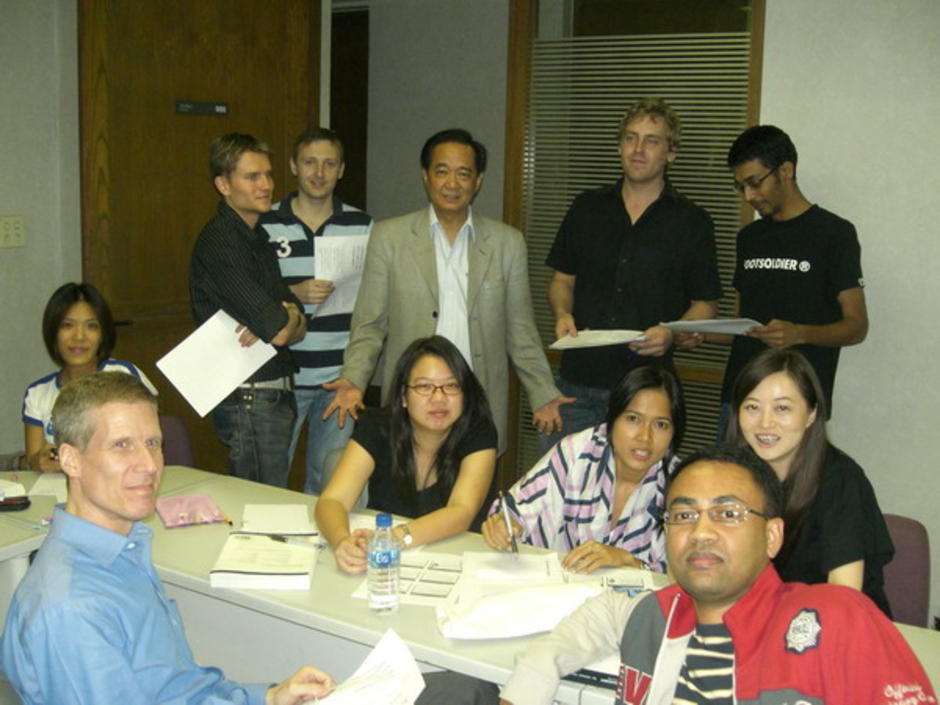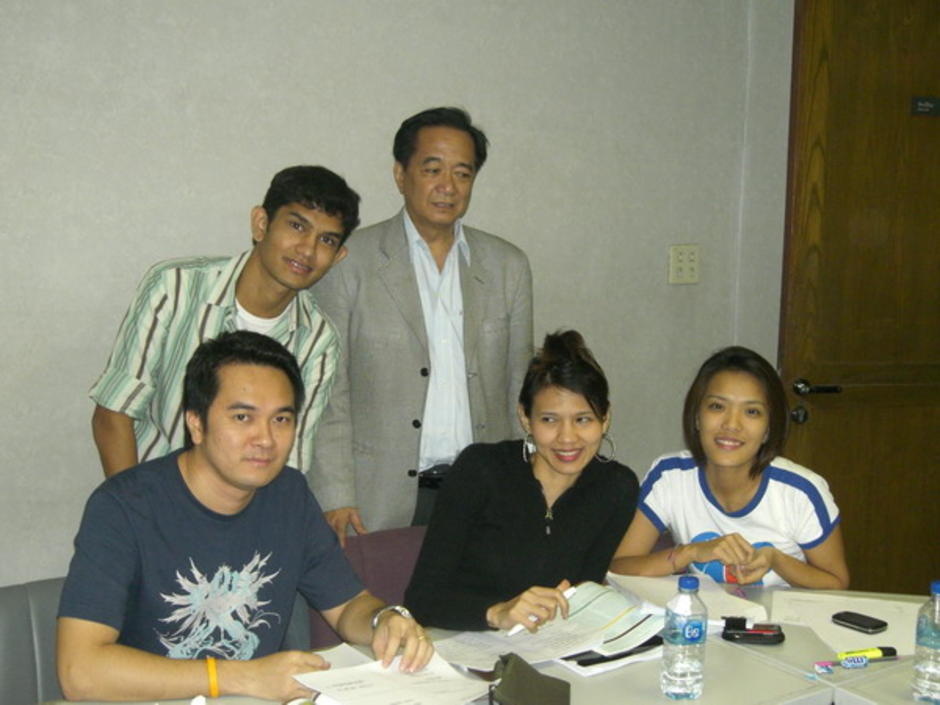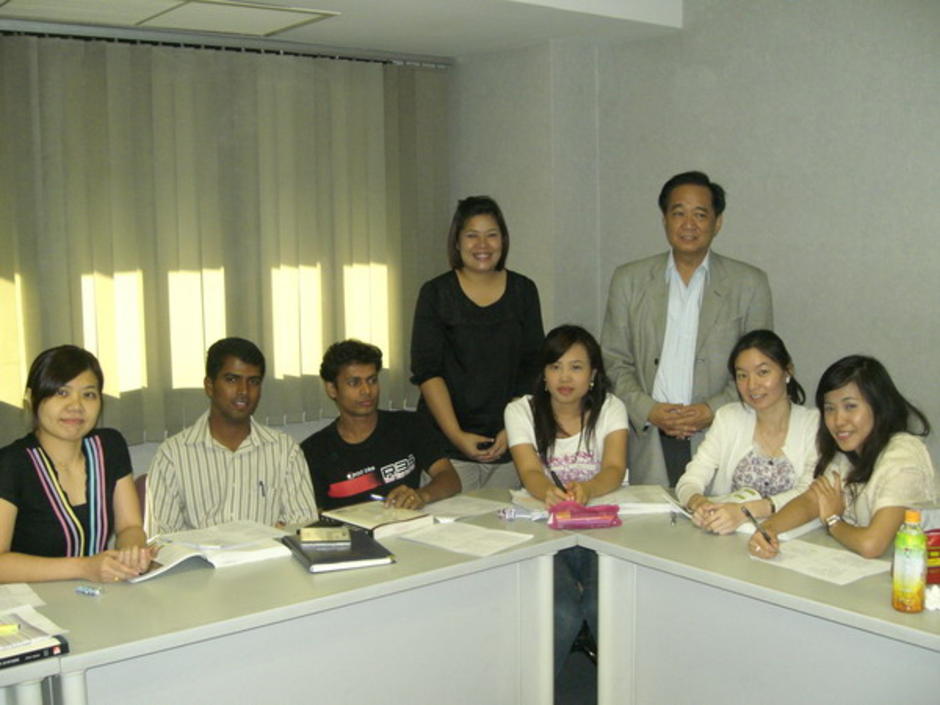Q1.) Why education is important in competing in globalization?
A country’s ability to compete in the world economy depends on a highly educated workforce. Ability to build a competitive labor force is the heart of a country’s competitiveness. Education is a golden key to handle all building and training knowledge to country’s workforce. Therefore, the more government invests into the education system of the country, the more competitive labor force is available for the companies operating and for competing globalization.
Can Thailand compete on the global stage?
Many foreigners said on several threads that rulers and education system of Thailand are not keen with having Thais enter and compete on the global stage. The rulers of the country would prefer a 'closed' society that was self-sufficient in terms of sustaining life and depending on tourism and some limited manufacturing - without competing globally.
One of our friends above also mentioned about our legal that foreigners cannot own any assets in the country and from investment point of view, the issue is negative and it prevents foreign technology and competency from accessing the markets isolates the open competition and in the long run, we will be left behind from other Asian countries.
In my views, those can’t proof that Thailand isn't interested in competing globally or improving our education system or even cant’ compete on the global stage? Our system has many good rules and intelligent Thai people are trying to change but it is a monumental task and it will take a long time. Another factor is the rapid change of the needs of the education system and Thailand is essentially playing catch-up, when they've caught up in one area, the needs will have changed, and it make the job all the more difficult.
For the owning assets issue, assume that if we release this legal and let foreigner own our assets. Many foreigners will come to Thailand, run and own many businesses. The country’s GDP may growth at two digits. The country will be upgraded to a developing country, and full of rich people. However, “what is benefit for Thai people”. “What is good for us? No, Nothing, since the rich people are only foreigner who use our asset to build their rich, Thai people in general can be only staff in the foreign company and can’t own any assets and/or only be the second people in their own country.
So, to compete in globalization, Thailand doesn’t’ need to change our legal of letting foreigners to own our assets. We can create our growth by our own effort, we just need to learn to know the enemy (competitors), learn to use Western strategies and weapons to fight with Western competitors. Just like “Sun Tzu or Sun Wu” theory said;
“Know your enemy, know yourself, and you can fight a hundred battles with no danger of defeat. When you are ignorant of the enemy but know yourself, your chances of winning and losing are equal. If you don’t know both your enemy and yourself, you are bound to perish in all battles…know the terrain, know the weather, and your victory will be complete”.
Q2.) Estimate the number of foreign employees in Thailand by nationalities and find out what is the problem working with Thai people?
1. Estimate the number of foreign employees in Thailand; I will divide foreign employees into 2 groups:
1. Unskilled labor, estimate around 1-2 million– mostly from Burma, Laos, and Cambodia – and hire to perform difficult, dangerous and dirty tasks that Thais try to avoid.
2. Skilled labor, estimate around 130,000, mostly are from Japan, Malaysia, Korea, England, China, USA, Singapore, Germany, and India respectively- These group hire by their headquarter office, to perform the tasks for the top end positions. We will see this group of people in the company, which has foreign ownerships more than 10% of its equity. (The estimate figure have already included English teacher in Thailand)
2- What is the problem working with Thai people?
When we work across country, culture and language difference are the most important problem that we need to deal with.
From my own experience of working with foreigner and searching some over the internet, I found foreigners blame Thai people in many issues (more than 30 issues), but I will show you a few main example issues as following;
1. English knowledge is very poor and it makes difficult to communicate with foreigner.
The Thai English educational system is not improving for the following reasons:
• We start too late for learning English:
Most of worker in Thailand now are the people who started learning English at Prathom 5, which is too late for competent English learning. (me, for example, I started too late of learning English, 10 years pass … until now … my English knowledge is very poor and I still can’t speak or write English correctly.)
Many research said that the best time of learning is at age 3, or on kindergarten level. So, Thai government changed the level of starting period in learning English for Thai people from Prathom 5 to kindergarten level since 2003, It means that our next generation people will have less problem with English knowledge, however the English teacher are Thai which will create another problem below;
• Lack of qualified English Teacher:
Teacher salary is very low in Thailand, Thai teachers initial starting wage at a government school is 7,000 Baht and this is not going to attract high caliber applicants, and many Thai teachers cannot even utter "Hello". If we look for native English teacher, we also don’t have enough people to support this stage because we can’t offer a high attractive income for them compared to other Asian countries.
Native English teacher in Thailand can earn in average at 40,000 Baht per moth compared to 100,000 per month that they can earn from teaching in Korea. Our working conditions are very poor too, teacher in Thailand do not receive medical care, no reimburse for visa or work permit costs. Most English teachers in Thailand are suffering from their daily life (low income, high expenses) and cannot concentrate on their teaching job. Their cost of living is higher than Thai people are, for example, if you are Thai and ask to buy a shirt in a street shop, they will sell to you at “199 Baht”, but if you are foreigner, the price will increase to 399 Bath. Most of them have not salary left for saving. Whenever their contracts ended, they will quickly move to teach in other Asian countries (the remaining teacher Thailand are people who contract have not ended yet and the people who is married to Thai people, which have no choice to move anywhere).
To solve these problems, we have to pay more salary for English teacher and offer the attractive benefit and other interesting conditions and also provide a visa and work permit with no or very low cost for a person who work as an English teacher in Thailand. Then we will have qualified English Teacher enough for our schools through out the country and our English knowledge will improve quickly.
2. Time Management:
Thailand is traditionally an agricultural society, when we grow the rice we have to wait for a year to gain the result, so the meeting times or schedules, are not as important as they may be in western country. Thais time may be 20-30 minutes "late".
3. Thinking problem:
A lot of complains about the poor quality of Thai thinking system; Thai people are now less creative than other countries. Some of Thai people are now could not think or “Kitt Mai Pen” Thais are too much “thinking in the box rather than thinking out of the box” etc. I think Thai people do thinking out of the box but we stuck in our culture that we cannot say anything or comment an elderly person, we can’t show our idea to public if that idea look better than our senior people’s idea.
I did one mistake to senior staff since 8 years ago, we have foreign boss who motivated us and asked us to share any ideas or any comments like Western people do. I believed him, and shown my idea that look better than senior staff’ idea at the meeting room. She felt losing her face among people and a day after that she returned a lesson to me and I still “hurt” until today, so, I scare to do the same thing to Thai senior people and I don’t believe in every thing that foreign boss said, something good for western people but not for Thai.
We all are being forced by our culture and our family rules, therefore, at work, we don’t like being forced by foreign boss who are not our Thai senior citizen or our family member, so when foreign boss forced us to do anything that we are not comfortable to do so, we just ignore it. We have our own way of interpret things to suit our ways.
Q3. Search my name in Google. interview about cross cultural working system with Mr. kriengsak. read them and write me in blog what you learn.
After reading the interview with Dr. Chira, I categorized myself to the one of Thais who takes sides by labeling foreigners as bad people. I am in the third group who do not studies abroad but have moderate awareness of the Westerner by working closely with foreigners. Just as Dr. Chira said, the economic crisis has triggered Thais to feel negative toward foreigners (included me).
Even I know that the cause of this crisis come from both Thai and foreigner but I still hate Hedge Fund and George Soros.
Because of the Globalization, foreigners are continue coming to work in Thailand and increase every year, especially in financial company, we can see them in everywhere and I have to work with them in every day, and by acting as a good manner, speaking with a smiling face but inside my heart, I still hate them.
However, from the article, Dr. Chira gives us the good suggestions about how to work with foreigner. I will use some of them in practice for reducing my bad feeling.
Thanks for good advice.



